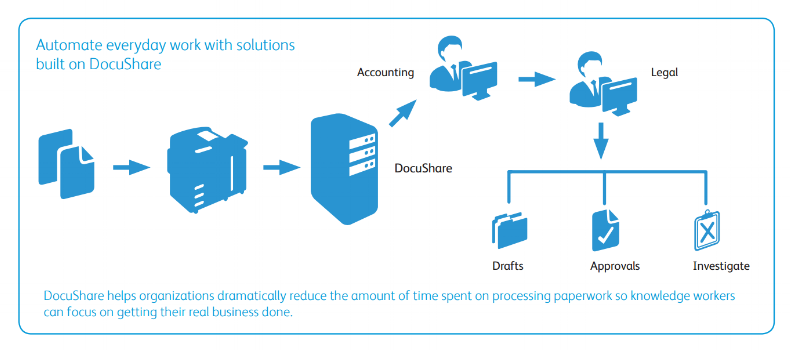Stay up to date with our latest news and insights
Supporting description on the types of content that feature in the blog.

Your business probably uses a combination of paper and digital content in many of its processes.
Mixing the two is inherently difficult, and makes managing the processes themselves challenging for employees. Duplicated effort, misplaced files and the inability to share information easily can significantly dent productivity.
The answer? Enterprise Content Management, or ‘ECM’, for short.

The lifecycle of a document begins with it’s creation, through to storage and on-going accessibility. With ECM, your business can ensure these process takes place efficiently and for the benefit of employees.
By capturing and storing documents digitally, ECM provides the following benefits:
Think of the amount of time your employees currently spend processing paperwork just so they can do their job.
With ECM, you’ll dramatically reduce the amount of time it takes to manage paper and digital content.
It does this by automating everyday tasks with digital solutions. Documents that exist in paper form are digitised, and join those that are already digital.
Consider a paper contract and corresponding email, both of which need to be referred to by the accounts and legal departments. Without ECM, employees within each department would have to wrestle with a single paper document that might need to be shared and an email that may only exist in one inbox.
Enterprise Content Management takes both documents and makes them available to both teams simultaneously. This means accounts can view and act on the information they need, while legal can do their work without having to wait for the information to be released from accounts.
There are three components of a great ECM system:
Your ECM system should include a private cloud storage solution. This will enable you to securely capture, process, manage and access content regardless of where people happen to be located.
For ECM to be effective, it needs to be able to automate manual, paper-based processes.
It does this by applying advanced digital workflows that make light work of business critical transactions that still rely on paper. It’ll even route documents to the right people within the business, saving a huge amount of time for everyone involved.
Your business will undoubtedly rely on a number of critical systems, and an ECM system needs to play nicely with them if its true benefits are to be realised.
This is why the best ECM solutions integrate with line-of-business systems such as enterprise resource planning (ERP). This helps with user acceptance and ensures the ECM system can scale as your business grows.
Enterprise Content Management could be the key to raising efficiency and productivity in your business, one process at a time.
Supporting description on the types of content that feature in the blog.

20-09-2024
Digital document management tools offer a range of compelling benefits for businesses, including a PDF editor, a file converter and a form generator. You can also integrate with digital signatures qui...

20-09-2024
When choosing a SaaS software to deal with your company’s PDF documents and enable forms to be digitally sent and signed, you’ll want a product that’s user-friendly and easy to use. With Tungsten’s Po...

11-07-2024
Belkin is a global technology company that provides high-quality electronics products, from wireless chargers to power banks. Their people-centric approach and best-in-class functionality have positio...